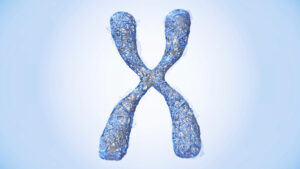As parents, our children’s health is always a top priority. When faced with a rare condition like Fabry disease, it can be distressing and confusing. We aim to provide clear and helpful information about Fabry disease, its causes, symptoms, diagnosis, and treatment options.
What is Fabry Disease?
It is a rare genetic disorder that affects the body’s ability to break down a specific type of fat. This fat builds up in the cells of different organs, leading to a range of health problems. The condition primarily affects the heart, kidneys, and nervous system, but symptoms can appear in many areas of the body.
It is a progressive disorder, meaning symptoms worsen over time. Early diagnosis and treatment are essential to managing the condition and improving quality of life.
What Causes Fabry Disease?
It is caused by mutations in the GLA gene. This gene provides instructions for producing an enzyme called alpha-galactosidase A (α-GAL A), which helps break down certain fats in the body. When this enzyme is missing or not working properly, fat accumulates in the cells, leading to damage in various organs.
The disease is inherited in an X-linked pattern, meaning it primarily affects males more severely. However, females can also develop symptoms, though they may be milder or appear later in life.
Symptoms of Fabry Disease
The symptoms of Fabry disease can vary widely from person to person. Some individuals experience mild symptoms, while others develop severe complications.
A 10-year-old boy started experiencing burning pain in his hands and feet, especially after playing outside. His parents initially thought it was due to dehydration or growing pains. Over time, he also developed digestive problems and a strange rash on his lower abdomen. After years of misdiagnosis, a specialist finally recommended genetic testing, which confirmed Fabry disease. With early treatment, his symptoms became more manageable, helping him stay active and enjoy life like other kids his age.
Common symptoms include:
- Pain and burning sensations in the hands and feet
- Skin rash (angiokeratomas) – small, dark red spots, often around the lower abdomen
- Reduced ability to sweat (anhidrosis)
- Digestive issues like stomach pain, diarrhea, and nausea
- Hearing loss or ringing in the ears (tinnitus)
- Kidney problems, which can lead to kidney failure
- Heart complications, including an irregular heartbeat or an enlarged heart
- Strokes or other neurological issues, especially in young adults
Symptoms can begin in childhood or adolescence, but many people are diagnosed much later when serious complications develop.
How is it diagnosed?
It is diagnosed through blood tests, genetic testing, and enzyme activity tests. Since the symptoms can be similar to other conditions, genetic testing is often needed to confirm the diagnosis. Some states also include Fabry disease in their newborn screening programs, which helps identify the condition early.
If you’ve been misdiagnosed or suspect a diagnostic error, read our guide on what to do after a Fabry disease misdiagnosis for clarity on next steps and support options.
Treatment for Fabry Disease
While there is no cure for this disease, treatments are available to help manage symptoms and slow the disease’s progression:
- Enzyme Replacement Therapy (ERT): This involves regular infusions of the missing enzyme to help break down fat and prevent further damage.
- Chaperone Therapy: A newer treatment that helps stabilize the defective enzyme so it can function better.
- Medications for symptom management: Pain relievers, heart medications, and kidney treatments can help improve quality of life.
- Lifestyle changes: A healthy diet, regular exercise, and avoiding heat exposure can help manage symptoms.
Fabry disease is a serious condition, but early diagnosis and treatment can make a big difference. If you suspect your child has this disease or if there is a family history, talk to a doctor about genetic testing. Advances in research are bringing new hope, and with the right care, individuals with Fabry disease can lead fulfilling lives. Understanding Fabry disease is the first step in taking control of your child’s health. If you have concerns, seek medical advice to explore testing and treatment options.



